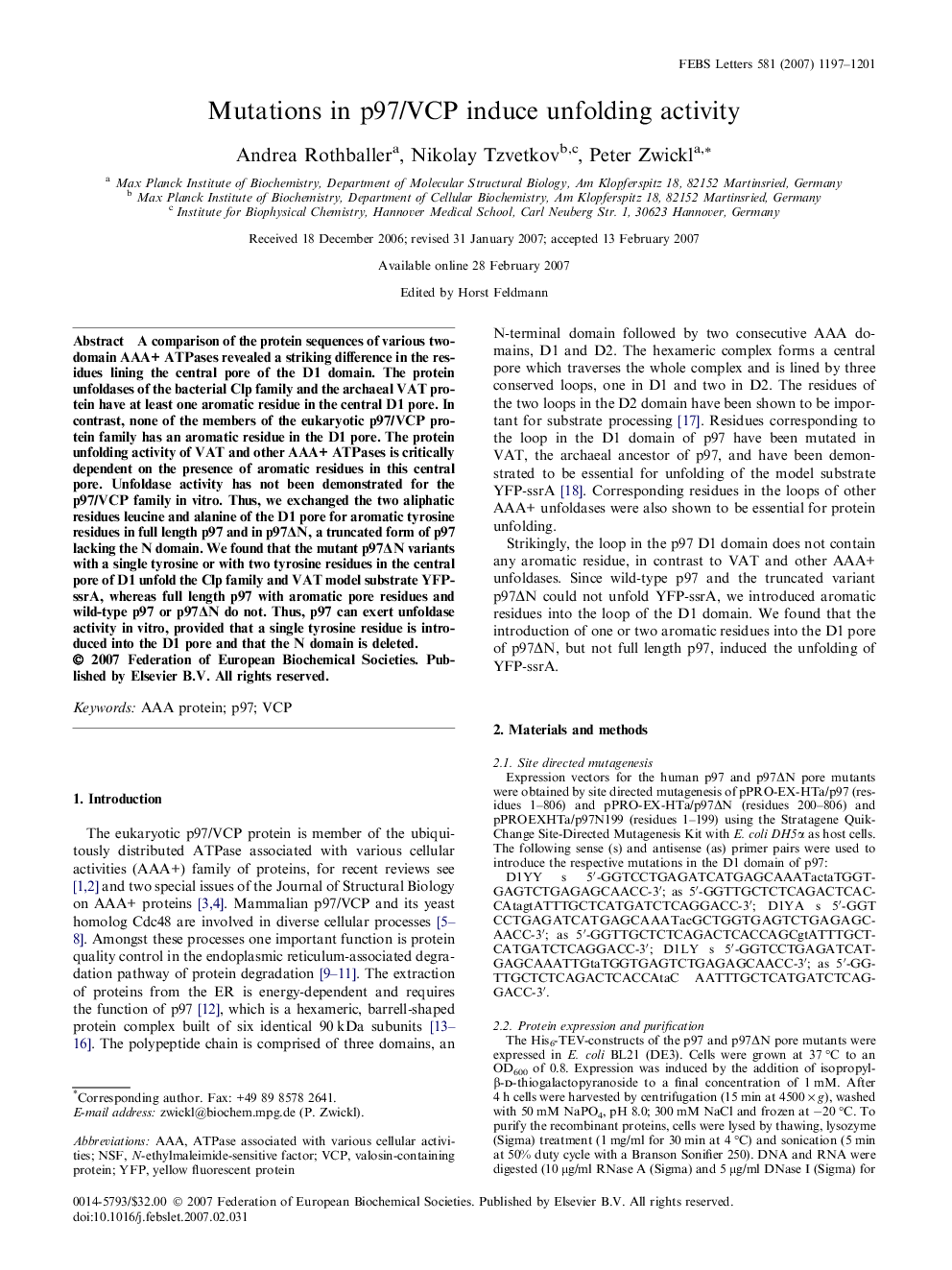| Article ID | Journal | Published Year | Pages | File Type |
|---|---|---|---|---|
| 2051586 | FEBS Letters | 2007 | 5 Pages |
A comparison of the protein sequences of various two-domain AAA+ ATPases revealed a striking difference in the residues lining the central pore of the D1 domain. The protein unfoldases of the bacterial Clp family and the archaeal VAT protein have at least one aromatic residue in the central D1 pore. In contrast, none of the members of the eukaryotic p97/VCP protein family has an aromatic residue in the D1 pore. The protein unfolding activity of VAT and other AAA+ ATPases is critically dependent on the presence of aromatic residues in this central pore. Unfoldase activity has not been demonstrated for the p97/VCP family in vitro. Thus, we exchanged the two aliphatic residues leucine and alanine of the D1 pore for aromatic tyrosine residues in full length p97 and in p97ΔN, a truncated form of p97 lacking the N domain. We found that the mutant p97ΔN variants with a single tyrosine or with two tyrosine residues in the central pore of D1 unfold the Clp family and VAT model substrate YFP-ssrA, whereas full length p97 with aromatic pore residues and wild-type p97 or p97ΔN do not. Thus, p97 can exert unfoldase activity in vitro, provided that a single tyrosine residue is introduced into the D1 pore and that the N domain is deleted.
